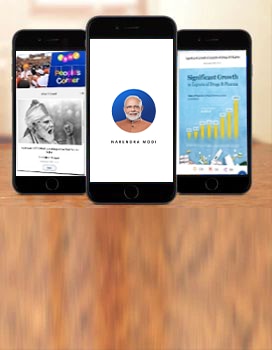India and France are strategically located resident powers and key partners with vital stakes in the Indo Pacific region. The Indo-French partnership in the Indian ocean has become an important focus of our bilateral relations. In 2018, India and France agreed on a ‘Joint Strategic Vision of India-France Cooperation in the Indian Ocean Region’. We are now ready to extend our joint efforts to the Pacific.
Our two countries believe in a free, open, inclusive, secure and peaceful Indo Pacific region. Our cooperation seeks to secure our own economic and security interests; ensure equal and free access to global commons; build partnerships of prosperity and sustainability in the region; advance the rule of international law; and, working with others in the region and beyond, build a balanced and stable order in the region, with respect for sovereignty and territorial integrity.
Prime Minister Modi’s vision of SAGAR (Security and Growth for All in the Region) and President Macron’s vision of security and cooperation outlined in the Indo Pacific Strategy of France are very much aligned. Our cooperation is comprehensive and covers defence, security, economic, connectivity, infrastructure, sustainability and human centric development.
Our bilateral cooperation advances our mutual security and supports peace and stability in the Indo Pacific region. Our cooperation extends from seabed to space. We will continue to deepen our exchanges, cooperate on situational and domain awareness, intensify maritime cooperation across the region such as the one we conduct in the South West Indian Ocean Region in liaison with partner countries in the region. We will also increase militaries’ naval visits and develop defence industrial capabilities in India and jointly support the needs of other countries. We will continue to develop our comprehensive cooperation including the French overseas territories of La Reunion, New Caledonia and French Polynesia and in coordination with other countries in the region and beyond.
We will continue to work together to extend development cooperation to countries in the region, including in Africa, the Indian Ocean Region, South Asia, Southeast Asia and the Pacific. We will strengthen our plurilateral arrangements with Australia and UAE and build new ones in the region. We will strengthen our cooperation in regional forums such as Indian Ocean Rim Association, Indian Ocean Naval Symposium, the Indian Ocean Commission, Djibouti Code of Conduct, the ADMM+ and ARF.
We will strengthen maritime security coordination through IFC-IOR in India, EMASoH in UAE and Atalanta, RCOC in Seychelles, RMIFC in Madagascar and ReCAAP in Singapore. France also supports India’s willingness to join Combined Maritime Forces (CMF).
We will work together to advance the objectives of Indo Pacific Oceans Initiative which aims to address common challenges in the region through collaborative actions under its seven pillars. Under France’s lead on the Maritime Resources pillar, we will work together to implement practical projects, in synergy with, and under, the various bilateral, regional and global initiatives by the two sides, for creating an ecosystem for sustainable development of maritime resources and combatting activities like IUU fishing.
India and France launched the International Solar Alliance and are committed to the deployment of renewable energies in the region. They are also proposing that start-ups in the region benefit from the Solar X Challenge project.
India and France are continuing to implement the Indo-Pacific Parks Partnership and are supporting a mangrove conservation initiative aimed at the Pacific States in particular.
The two sides will work on finalizing the India-France Indo-Pacific Triangular Development Cooperation Fund. Our partnership in the Coalition for Disaster Resilient Infrastructure will help build a more resilient and sustainable future for the people of the region, especially in the small island states. Furthermore, France invites India to join the KIWA initiative, a multi-donor program designed to strengthen resilience to climate change and the preservation of biodiversity in the Pacific through simplified financial support for concrete projects.
India and France will work to set up the Indo-French Health Campus for the Indo-Pacific, with the aim of making it a regional magnet for research and academia. Building on the experience in the Indian ocean, we may consider to open the Campus to Pacific Island Nationals.
We believe that India-France partnership will be a crucial pillar of the inter-connected and intersecting arrangements in Indo Pacific region and indispensable for a peaceful and prosperous future for the Indo Pacific region.













